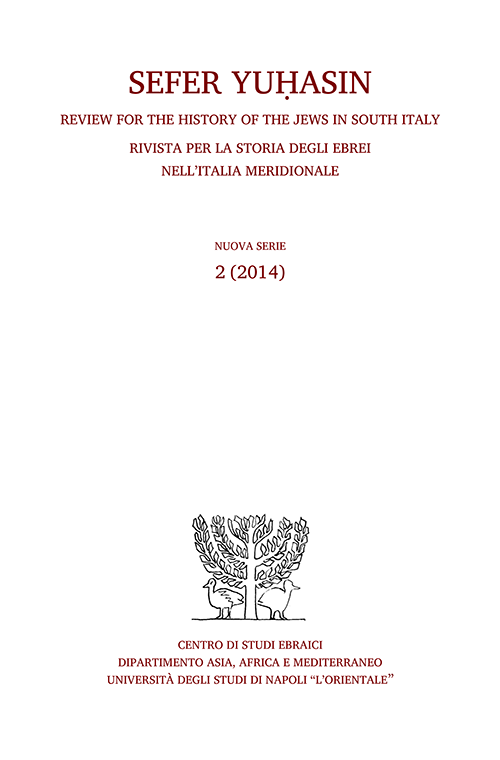Il Sefer ha-yaqar di Šabbeṯay Donnolo: traduzione italiana commentata
DOI:
https://doi.org/10.6092/2281-6062/5568Abstract
The Sefer ha-yaqar of Šabbeṯay Donnolo: An Annotated Italian Translation
The Sefer ha-yaqar, also known as Sefer ha-mirqaḥoṯ, is a work of pharmacopoeia written by the Jewish medic and astronomer Šabbeṯay Donnolo, in which the author sums up his forty-year experience in preparing electuaries (mirqaḥoṯ) and other medicaments. Honey is the main ingredient for electuaries, so the treatise first of all gives instructions as to how to avoid the wrong kinds of honey and how to prepare the right ones in order to make them last for a long time. Numerous herbs, plants, flowers and resins are described, together with the correct procedure for each one in order to mix them not only with honey but occasionaly also with oil and other fats. The present Italian translation, which was carried out on the Hebrew text, presents some new suggestions regarding the identification of some plant names, of which Donnolo often gives the Latin, Greek or vernacular versions.
Downloads
Downloads
Published
How to Cite
Issue
Section
License
Gli autori che pubblicano su questa rivista accettano le seguenti condizioni:
- Gli autori mantengono i diritti sulla loro opera e cedono alla rivista il diritto di prima pubblicazione dell'opera, contemporaneamente licenziata sotto una Licenza Creative Commons - Attribuzione che permette ad altri di condividere l'opera indicando la paternità intellettuale e la prima pubblicazione su questa rivista.
- Gli autori possono aderire ad altri accordi di licenza non esclusiva per la distribuzione della versione dell'opera pubblicata (es. depositarla in un archivio istituzionale o pubblicarla in una monografia), a patto di indicare che la prima pubblicazione è avvenuta su questa rivista.
- Gli autori possono diffondere la loro opera online (es. in repository istituzionali o nel loro sito web) prima e durante il processo di submission, poiché può portare a scambi produttivi e aumentare le citazioni dell'opera pubblicata (Vedi The Effect of Open Access).


